AuthorAfter the opponents double our opening bid of 1 in a major, the whole context of our possible actions is affected. In traditional bridge theory (think: rubber bridge), when an opponent announces some strength by making a takeout double, our main strength-showing action is the redouble. All other bids are weak and not forcing. So, after 1S (X), 2C may be bid with something like these hands: Stronger hands with clubs begin with a redouble. And so do stronger hands with diamonds, or hearts. This makes the redouble (also known -- not as a compliment -- as the "omnibus redouble") vulnerable to preemption. Modern bridge theory arranges the bids over a double more intelligently, allowing responder to show his suit immediately, and reserving the redouble for a strong balanced (or almost balanced) hand, over which preemption is not that big a risk (since you can always double them if they get too frisky). One common way to play these bids is as transfers: After 1 Spade (X) - 1NT = clubs 2 Clubs = diamonds 2 Diamonds = hearts 2 Hearts = spade raise 2 Spades = Spade raise Higher bids will be discussed shortly. This being an article on raises, the main point here is to emphasize the availability of two bids to show spade raises (below the level of 2 in our suit). The same scheme works when the opening bid is in hearts, with transfers also beginning in 1NT to show clubs, etc. (In that auction, 1 Spade is natural with spades). The most common way to take advantage of these two raises is to play that the direct raise as the weakest raise. Note that this is the raise that takes away most space and flexibility -- remember that when you bid 2 Hearts to show spades, you are giving them a free double, to mean whatever they want it to mean. When you bid the transfer raise (2 Hearts in this example), you are presumed to have a higher minimum (but in fact you are unlimited). So, in this version of the convention, these would be 2 Spade bids after the double: And these would be good enough for a 2 Heart transfer raise: The last example is already crossing into invitational territory. Of course, since 2 Hearts is 100% forcing, you can use the bid with even stronger hands, but these stronger hands will have fewer problems (being game-forcing) and are also much rarer than the examples above. For the 2 Heart bid, opener should picture a range that includes from a nice constructive raise (8-9 if you want to think in hcp) to a full invitational 3-card raise, and react accordingly (knowing that with the invitational hand responder will bid again).
This transfer raise can have 4 cards, since the direct jump to 3 Spades is preemptive (3-6 if we are thinking hcp -- it can have zero with the right hand yes, but hands with 0 hcp are very rare to begin with. Think 3-6 and you'll get it right more than 95% of the hands). Hands with 7-8 will often go through the transfer raise (and perhaps bid again, especially if the opponents do not keep quiet, to follow the Law of Total Tricks and reach the 3-level with 9 combined trumps). (If the opponents were not there, we could identify some theoretical advantage to arranging these 3 ranges -- weak raise, constructive raise, invitational raise -- differently, by using the transfer raise for the bottom and top hands, and the direct raise to show the middle hand. I am not fully convinced this is best in the presence of the opponents, though, since with the weak hands you want to make life tougher for them. Let us say it is an open question and move on). With 4 cards and a stronger hand (9+), you have available another, quite ancient, conventional raise, the Jordan 2NT. This is a senseless bid to be used in a natural way over a double (if you have a strong balanced raise without a fit you should be redoubling), which is why it has been used as a raise for so many decades. It is unlimited, always showing 4+ trumps, and creating a forcing pass situation at the 4-level and beyond. Some people play jumps as raises too (fit-showing, or perhaps Bergen). I am becoming more and more convinced that the best use for these bids is the old-fashioned weak jump, long in the bid suit, denying a fit. This is what I would suggest to my partner in an established partnership. Double jumps are a different thing: 1S (X) 4D should be a splinter or a fit-showing jump (you pick your favorite -- I would go with splinter). There is a final idle bid in this auction that can be used as a raise: the direct jump to 3NT. (If you want to bid this naturally, you can always find another route, usually beginning with redouble, and perhaps picking up a valuable penalty on your way there). This is better used as a "strongish 4-Major raise", 5 trumps, some high cards on the side (not many), so that the direct jump to 4-Major can be more well-defined. In this scheme, over 1S (X), you would bid 3NT with KJxxx K Jxxx xxx and bid 4S with QJxxx x xxxxx xx. This will help partner judge whether to go or not to 5 Spades if the opponents bid something.
0 Comments
Leave a Reply. |
Archives
September 2021
Categories
All
|
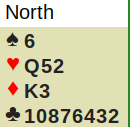
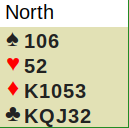
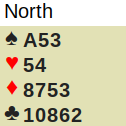
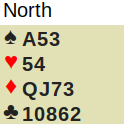
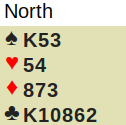
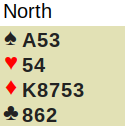
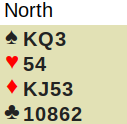
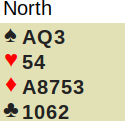
 RSS Feed
RSS Feed